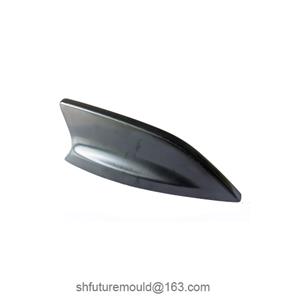Maintenance Procedures for Idle Injection Molds Before Reusing
Before reusing an idle injection mold, it is necessary to perform a series of maintenance procedures to ensure it is in good condition, improve production efficiency, and extend the mold's service life.
I. Cleaning the Mold
External Cleaning: Wipe the exterior of the mold with a clean, soft cloth to remove dust, oil, and other contaminants. For stubborn stains, use a mild cleaning agent, but be careful to avoid corrosive cleaners that may damage the mold surface.
Check that the mold's nameplate, markings, and safety devices are visible. Replace or repair any that are damaged or unclear.
Internal Cleaning: Open the mold and carefully clean the cavity, core, slides, ejector pins, and other parts to remove residual plastic, oil, and rust. Specialized mold cleaning agents, brass brushes, compressed air, and other tools can be used.
For complex mold structures such as hot runner systems and cooling channels, use professional cleaning equipment to ensure that internal passages are unobstructed.
II. Inspecting Mold Components
Guiding Components: Inspect guide posts, bushings, slide rails, and other guiding components for wear, deformation, or damage. If any problems are found, replace or repair them promptly to ensure smooth mold opening and closing movements.
Clean the guiding components and apply a suitable lubricant to reduce friction and wear.
Molding Components: Inspect the cavity, core, inserts, and other molding components for scratches, wear, corrosion, and other issues. For minor scratches and wear, use sandpaper or polishing compound to repair; for severe damage, replace the corresponding components.
Check the dimensional accuracy of the molding components to ensure they meet requirements. Make adjustments or repairs if there are deviations.
Ejection System: Inspect the ejector pins, ejector rods, return rods, and other ejection system components for bending, deformation, or damage. If any problems are found, replace or repair them promptly to ensure smooth ejection.
Clean the ejection system and apply a suitable lubricant to reduce friction and wear.
Cooling System: Check if the cooling channels are blocked, leaking, or damaged. If any problems are found, clean them with specialized cleaning equipment or replace the corresponding components.
Connect the cooling water pipes and check the sealing and water flow of the cooling system to ensure good cooling performance.
Hot Runner System: Inspect the hot runner nozzle, heating coil, thermocouple, and other components for damage or aging. If any problems are found, replace the corresponding components.
Clean the hot runner system and conduct a temperature test to ensure normal heating and temperature control.
III. Lubricating the Mold
Selecting the Right Lubricant: Choose a suitable lubricant based on the mold type, operating conditions, and requirements, such as lubricating oil or grease.
Avoid lubricants containing solid particles or corrosive components, as these can damage the mold surface or affect the quality of the plastic product.
Lubricating Mold Components: Lubricate the guiding components, ejection system, slide rails, and other moving parts by applying a suitable amount of lubricant to reduce friction and wear.
For hot runner systems and cooling channels, use a specialized lubricant to improve system performance and lifespan.
IV. Adjusting the Mold
Installing the Mold: Install the cleaned, inspected, and lubricated mold onto the injection molding machine, ensuring it is securely fastened and positioned accurately.
Connect the cooling water pipes, hot runner system, ejection system, and other auxiliary equipment, and check that the connections are correct and the seals are good.
Adjusting Parameters: Adjust the process parameters of the injection molding machine according to the requirements of the plastic product and the characteristics of the mold, such as temperature, pressure, and speed.
Conduct a trial run to observe the molding of the plastic product and check if the dimensional accuracy, appearance quality, and other requirements are met. Make adjustments to the process parameters or mold structure if there are any problems.
Optimizing Mold Performance: Based on the trial results, optimize and improve the mold, such as adjusting the cooling system, optimizing the gate location, and improving the venting system, to improve the performance and production efficiency of the mold.




